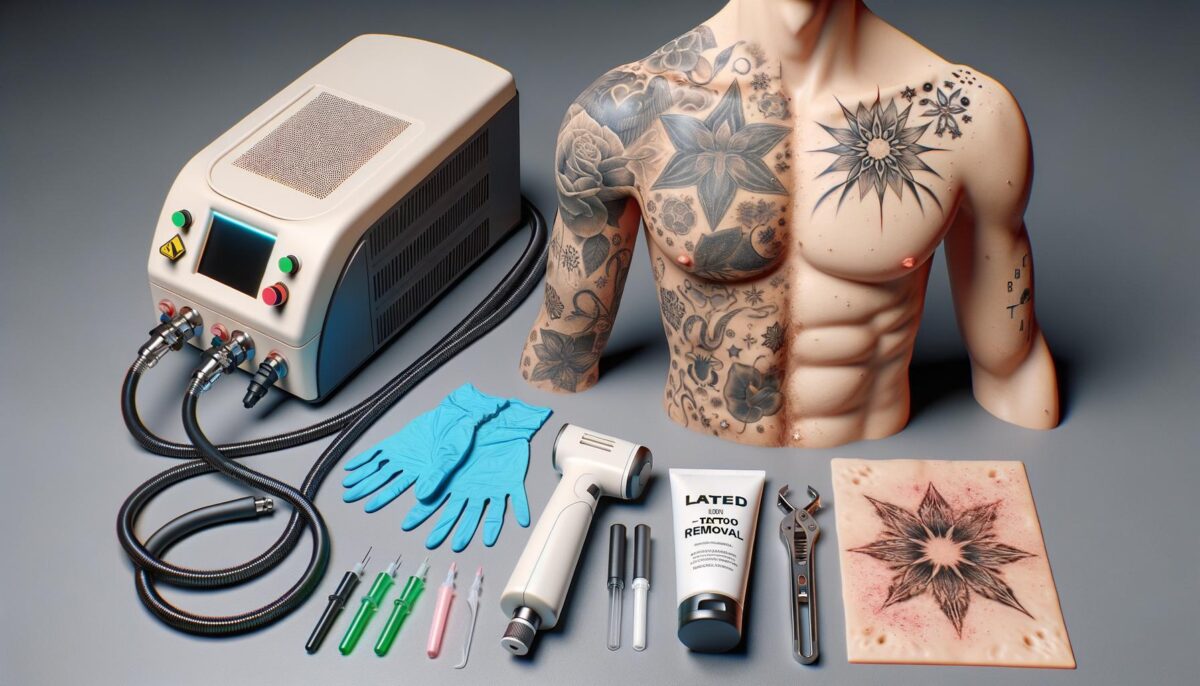The Evolution of Tattoo Removal
The history of tattoo removal is as colorful as the tattoos themselves. In the past, methods such as dermabrasion, salabrasion, and surgical excision were among the techniques used, though they often resulted in significant pain and scarring. Dermabrasion involves sanding the skin to remove the tattoo, while salabrasion uses a salt solution to achieve the same outcome. Surgical excision, as the name suggests, cuts out the tattooed skin. These methods were not only painful but also led to unsatisfactory cosmetic results.
Today, modern medicine offers more advanced options that promise better results with fewer side effects. The evolution to laser treatments, especially with technologies like Q-switched lasers and picosecond lasers, has transformed the industry. These lasers work by targeting the ink with precision, breaking down the pigments without damaging the surrounding skin, leading to more efficient ink removal with minimal scarring.
Understanding How Laser Removal Works
Among the best tattoo removal methods, laser treatments have emerged as a popular choice due to their precision and effectiveness. The science behind laser tattoo removal involves the application of highly concentrated light beams that penetrate the skin. This light energy is absorbed by the tattoo pigments, causing them to break into smaller particles. Over time, the body’s immune system naturally eliminates these fragmented particles, gradually fading the tattoo.
Laser treatments are usually categorized based on the type of laser used—Q-switched lasers are the traditional choice, suitable for removing a wide range of ink colors. On the other hand, picosecond lasers represent a newer technology, operating at a faster rate to achieve quicker results. Although both are effective, picosecond lasers are often highlighted for their efficiency in dealing with stubborn inks, such as greens and blues.
The Tattoo Removal Session Explained
For anyone considering laser tattoo removal, understanding what happens during a session can ease any apprehensions. Before the procedure, a consultation with a specialist occurs, during which they evaluate the tattoo’s age, color, size, and location. This initial assessment is crucial as it helps tailor the sessions to the individual’s specific needs.
During the session, protective eyewear is provided, and a numbing cream may be applied to minimize discomfort. The technician will use the laser to deliver light pulses to the tattoo, which may feel like a rubber band snapping against the skin. Each session typically lasts between 15 to 40 minutes, depending on the tattoo’s complexity. After the procedure, mild discomfort similar to a sunburn might be experienced, but it usually subsides within a day or two.
- Immediate application of ice packs post-session can help reduce discomfort.
- Patients are often advised to keep the treated area clean and apply an antibiotic ointment.
- Avoid sun exposure to the treated area to ensure proper healing.
Factors Influencing Removal Success
Several aspects govern the success and duration of tattoo removal treatments. One of the primary factors is the depth and type of ink used. Professional tattoos often penetrate deeper into the skin compared to amateur ones, requiring more sessions for complete removal. The color of the ink also matters; darker inks like blacks and browns are easier to remove, while hues such as green and yellow can be more challenging.
The individual’s skin type and health play a role as well. Healthier immune systems tend to break down and flush out ink particles more effectively. Understanding these factors can help manage expectations and inform decisions about which tattoo removal method might be preferable.
Potential Risks and Aftercare
While laser tattoo removal is considered safe, like any procedure, it comes with potential risks. Temporary side effects such as redness, swelling, blistering, and discoloration might occur. However, adhering to aftercare instructions minimizes these risks significantly. Avoiding picking at blisters or scabs is crucial to preventing infection and scarring.
Proper aftercare involves keeping the treated area dry, refraining from intense physical activities that cause excessive sweating, and following all medical advice from the technician. Awareness of these potential risks and diligent aftercare practice enhances the overall outcome of the tattoo removal process.
Conclusion
Choosing the right method to eliminate an unwanted tattoo requires careful consideration of the various options. With advancements like laser treatments, individuals can expect more efficient and aesthetically pleasing results. Understanding the process and factors that influence success can guide individuals in making informed decisions. Ultimately, consulting a qualified professional ensures that the journey toward a clean slate is both safe and effective.
